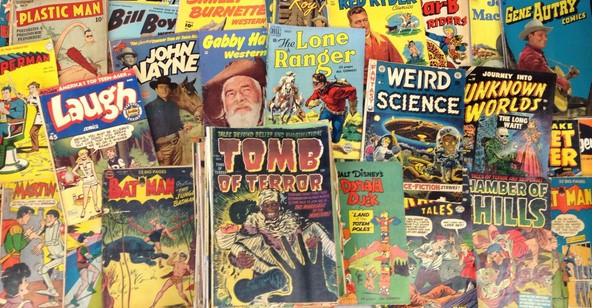The history of comic books is rich and fascinating. They started as simple illustrations combined with text, aimed at entertaining and informing readers. Over time, comic books evolved into a major part of popular culture. Today, they hold a significant place in both literature and entertainment. Their rise in popularity has been nothing short of remarkable. This article explores the journey of comic books, from their humble beginnings to their current status as a global phenomenon.

Early Beginnings of Comic Books
The history of comic books dates back to the late 19th century. However, their roots can be traced even further to ancient cultures, where visual storytelling was common. Early examples of comics include Egyptian hieroglyphs, Japanese emakimono, and ancient Greek pottery. These early forms of visual storytelling set the foundation for modern comics.
In the United States, comic strips in newspapers were among the first forms of popular comic books. By the early 20th century, comics began to take shape as we know them today. The first true comic book is often credited to Action Comics #1 in 1938, which introduced Superman, a character that would change the comic book industry forever. This marked the beginning of the Golden Age of comic books, where superheroes like Batman, Wonder Woman, and Captain America were born.
The Golden Age of Comics
The Golden Age of comics, which spanned from the late 1930s to the early 1950s, was a time of rapid growth. During this period, comic books became a mainstream form of entertainment. They were widely popular during and after World War II, with characters like Superman becoming cultural icons. These characters were not just stories; they symbolized hope, justice, and patriotism during a time of global conflict.
Comic book publishers during this era capitalized on the demand for superheroes. At the same time, they also introduced new genres such as crime, horror, and romance comics. Despite the booming popularity, the comic book industry faced challenges in the 1950s. The arrival of the Comics Code Authority, which sought to regulate content, led to a decline in the popularity of certain genres.
The Silver and Bronze Ages: Innovation and Change
As the Golden Age of comic books faded, the industry entered the Silver and Bronze Ages, roughly from the mid-1950s to the 1980s. During these periods, comic books experienced significant changes. The Silver Age saw a resurgence of superhero comics, with the creation of characters like Spider-Man and the X-Men. These new superheroes reflected the changing social and political climate of the time, addressing issues such as civil rights and personal identity.
The Bronze Age, on the other hand, brought darker and more complex themes into the world of comics. Storylines began to explore real-world issues, such as drug abuse, racism, and social inequality. This shift allowed comic books to reach a broader audience, including older readers who sought more mature content. The inclusion of these serious topics helped comics gain respect as a legitimate form of storytelling.
The Modern Era: Digital Age and Mainstream Success
The modern era of comic books, especially the digital age, has brought about even more innovation. With the rise of digital comics, readers can now access comic books from anywhere in the world, making them more accessible than ever before. In addition, major film studios have embraced the comic book genre, leading to the rise of superhero movies and TV shows. Marvel, DC, and independent comic publishers have expanded their influence into the entertainment industry, bringing characters like Iron Man, Black Panther, and Wonder Woman to the big screen.
This transition from comic books to film has brought comic book characters into the mainstream, further increasing their popularity. Today, comic book adaptations dominate the box office, with superhero films consistently breaking records. The influence of comics is undeniable, with comic-based stories becoming an integral part of global culture.
Conclusion: The Enduring Popularity of Comic Books
In conclusion, the history of comic books showcases their remarkable rise in popularity over the decades. From their early beginnings to their Golden Age and beyond, comic books have evolved in response to cultural shifts and technological advancements. Today, comics are not just limited to paper—digital platforms and blockbuster movies have helped comic book characters reach a global audience. As they continue to inspire and entertain, comic books have solidified their place in popular culture for generations to come.










